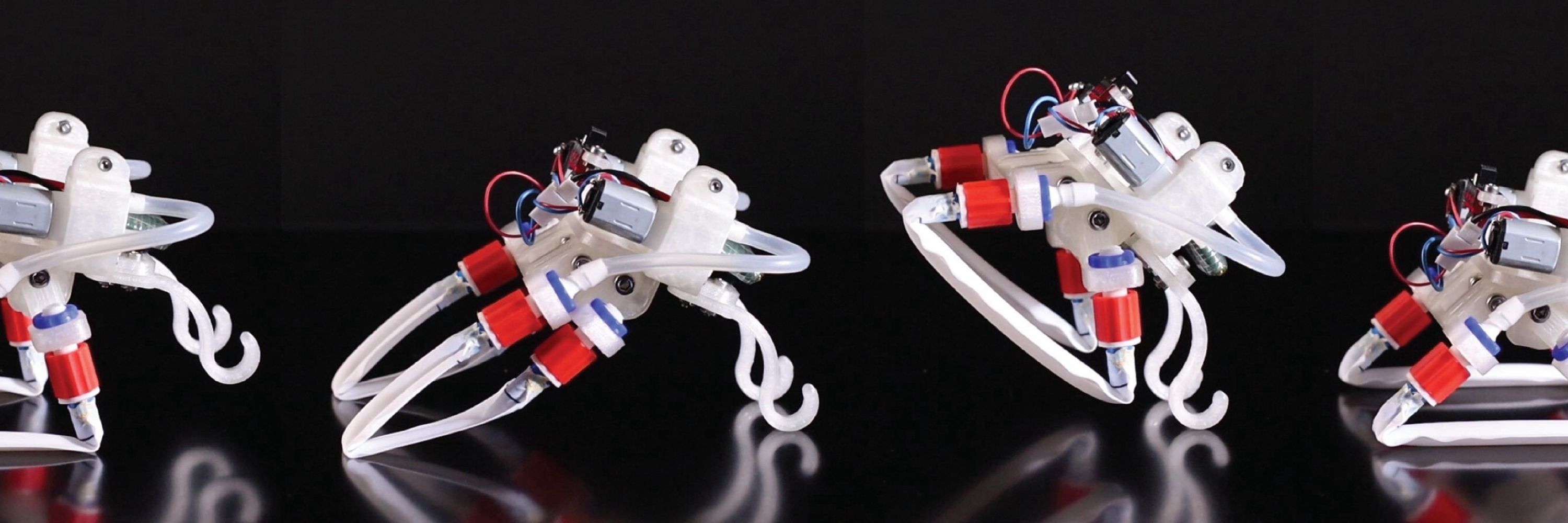
I research squishy machines and autonomous soft matter 🦠 🤖
Inflatables 🎈 fluidics 🫧 mechanical instabilities ⛓️💥 and self-oscillators 🌀
https://www.albertocomoretto.com/
One last note: the machine is doing all this with a single, constant pressure source as input, and nothing else. 🤯
That's it, folks! Here you find all the details (open access), in case you are curious:
www.cell.com/device/fullt...
One last note: the machine is doing all this with a single, constant pressure source as input, and nothing else. 🤯
That's it, folks! Here you find all the details (open access), in case you are curious:
www.cell.com/device/fullt...
Here is the final soft machine in action. What I find cool is the temporary nature of the short-term mechanical memory! After a retention time (tunable by design), the machine purposefully "forgets" that the interaction even occurred, going back to the default forward-locomoting behavior. 🧪⚛️
Here is the final soft machine in action. What I find cool is the temporary nature of the short-term mechanical memory! After a retention time (tunable by design), the machine purposefully "forgets" that the interaction even occurred, going back to the default forward-locomoting behavior. 🧪⚛️
Out now in Device (Cell Press @cellpress.bsky.social), we harness bistable elastic shells to program and memorize locomotion behaviors upon interactions with the surroundings. 🎈🐙
🧪⚛️ www.doi.org/10.1016/j.de...
(1/9)
Out now in Device (Cell Press @cellpress.bsky.social), we harness bistable elastic shells to program and memorize locomotion behaviors upon interactions with the surroundings. 🎈🐙
🧪⚛️ www.doi.org/10.1016/j.de...
(1/9)
Robots with coupled limbs display responsive behaviors: they autonomously avoid obstacles and even change locomotion gait when transitioning from ground to water, without control inputs! All of this by moving pretty fast and efficiently. 💃
(This video is in real time)
Robots with coupled limbs display responsive behaviors: they autonomously avoid obstacles and even change locomotion gait when transitioning from ground to water, without control inputs! All of this by moving pretty fast and efficiently. 💃
(This video is in real time)
By physical synchronization of multiple limbs through internal interconnections or interactions with the environment, robust and fast locomotion gaits dynamically emerge without the need for centralized processors. They go in sync even at 300 oscillations per second!
By physical synchronization of multiple limbs through internal interconnections or interactions with the environment, robust and fast locomotion gaits dynamically emerge without the need for centralized processors. They go in sync even at 300 oscillations per second!
We show that a soft tube undergoes kink wave instabilities when powered with a constant stream of air. Spontaneously, kinks form, travel, and then disappear along the tube itself.
We show that a soft tube undergoes kink wave instabilities when powered with a constant stream of air. Spontaneously, kinks form, travel, and then disappear along the tube itself.
Yes, through physical synchronization! Our article is out today in Science (@science.org)
Article: www.science.org/doi/10.1126/...
Authors: @albertocomoretto.bsky.social, H.A.H. Schomaker, J.T.B. Overvelde
More below 🧪 ⚛️
(1/6)
Yes, through physical synchronization! Our article is out today in Science (@science.org)
Article: www.science.org/doi/10.1126/...
Authors: @albertocomoretto.bsky.social, H.A.H. Schomaker, J.T.B. Overvelde
More below 🧪 ⚛️
(1/6)

